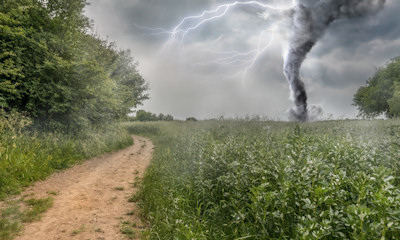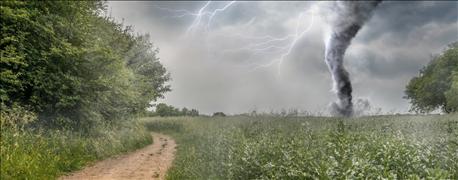March 13, 2016

With spring fast approaching, severe weather is right around the corner. TornadoHistoryProject.com is a website that archives tornado maps for the United States. They have over 58,000 archived tornadoes from 1950 through 2014.
To use the site go to Tornadohistoryproject.com and fill in the search terms at the top of the screen. The website places all the tornadoes that fall within the search boundaries on the map and labels them with a color-coded Fujita rating and path.

TORNADO SEASON: Now is the time to make yourself aware of tornadoes and safety plans should one occur. You can learn about past tornados on a special Website. (Photo: vchal/Thinkstock)
The site provides a summary of events in that search including: number of tornadoes, fatalities, and injuries, as well as the most fatal, injurious, and largest tornadoes by path length and width. Selecting a specific tornado will load that event’s path map as well as statistics on duration, damage, and location.
Here’s a four-step process using the site with an example.
Step one: Fill out the requested information for a search.
We decided to search in 2013, only in March, in Indiana, for all days of the month and in all counties. We also asked it to look for tornadoes of all rating types on the rating scale.
Step 2: Hit submit and view results.
Oops- we didn’t get a hit. We tried it again entering 2014. There were no tornadoes again. Next, we entered 2012.
Step 3: Both path of tornadoes and strength on rating scale appear on map.
There were six tornados in Indiana in March of 2012. The strongest was the Henryville tornado, which rated as a 4. There were several fatalities in that storm. There were two ‘0’ class tornadoes, one near Evansville and one east of Madison.
Step four: Click on the tornado marker on the map.
Clicking on the tornado rated as a 4 which hit Henryville, the site shows that it occurred on March 2, with 11 fatalities. If photos or videos are available, the site denotes it. In this case, no photos or videos were posted.
Tornadoes are some of the most powerful weather on Earth and a majority of them happen in the US. While this site won’t predict when or where a tornado will strike, knowing the tornadic history of an area goes a long way to help planning and forecasting for when the next one comes along.
-Eggert works in the Indiana State Climate Office. He writes from West Lafayette. Tom J. Bechman contributed to this story.
You May Also Like




